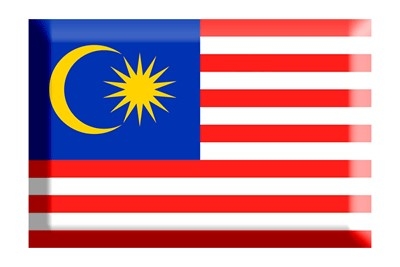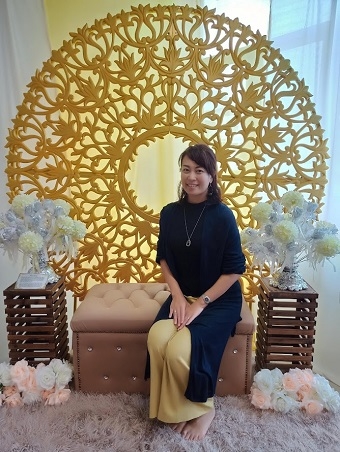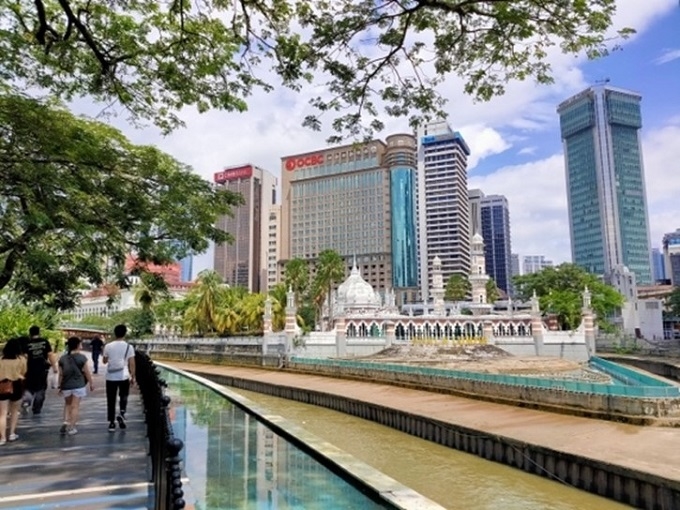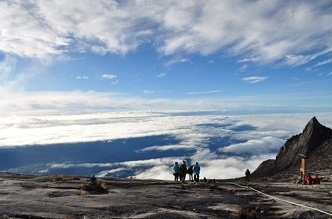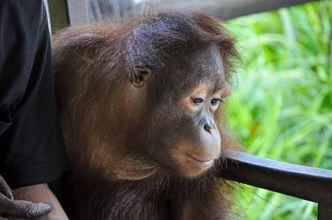People-to-People Exchanges and Empowerment in ASEAN <1>
What is ASEAN really like? JF staff on the ground share their latest insights
Articles from Brunei, Cambodia, Indonesia, Laos, and Malaysia
2024.5.2
【Special Feature 081】
Special Feature: People-to-People Exchanges and Empowerment in ASEAN (for summary on special features, click here )
In 2023, we celebrated the 50th year of ASEAN-Japan Friendship and Cooperation, and the Japan Foundation hosted a variety of associated events and workshops. You might be wondering which countries are members of ASEAN, what the culture of each of those countries is like, and what is going on there lately. If you think about it, there are probably a lot of things you don't know.
We would like to take this opportunity to introduce the latest developments in ASEAN, our neighbors we may know little about, along with some personal stories from Japan Foundation staff working in the region.
What is ASEAN?
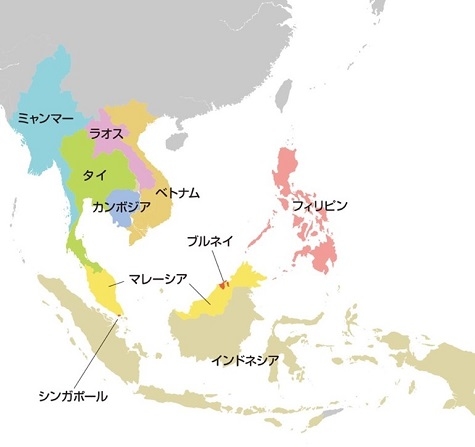
ASEAN (Association of Southeast Asian Nations) is a regional community that currently consists of ten member states The Japan Foundation has offices in eight of those countries and is deepening exchange with them
Brunei Darussalam
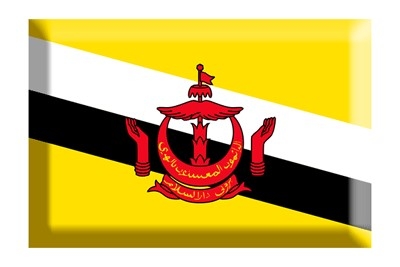
Area:
5,770 km²
Population:
Approximately 430,000 (2021 estimate)
Capital city:
Bandar Seri Begawan
Political system of government:
Constitutional monarchy (Sultan Hassanal Bolkiah)
Main languages:
Malay, English
Main religion:
Islam
Currency:
Brunei dollar
Geography
Located on the northwestern coast of the island of Borneo, the country is about the same size as Mie prefecture. Blessed with abundant underground resources, the country maintains a high standard of living for its citizens, with all medical and educational expenses free of charge and no income tax.
History
At the end of the 14th century, the king converted to Islam and became the first Sultan of Brunei. After an encounter with the visiting Magellan Expedition, Brunei held territory in the states of Sabah and Sarawak (in present-day Malaysia) and even the southern Philippines, but later became a British protectorate, gaining independence in 1984.
Major industries
Oil and natural gas production. Among all exports, mineral fuels (oil, liquefied natural gas, etc.) and chemical products account for more than 95%. Brunei is currently working to diversify its economy with the aim of breaking away from its dependence on the energy industry.
Relations with Japan
Japan is a major trading partner for Brunei, purchasing approximately 80% of its natural gas exports. And for Japan, Brunei is a key energy supplier. There is also active exchange in the form of technical cooperation along with education and culture.
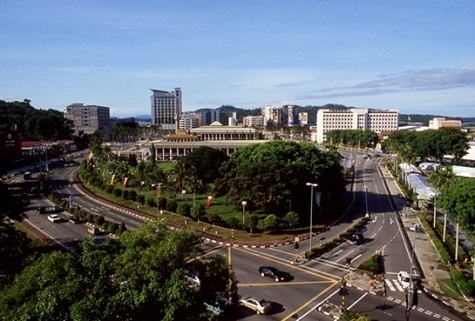
©ASEAN-Japan Centre
Kingdom of Cambodia
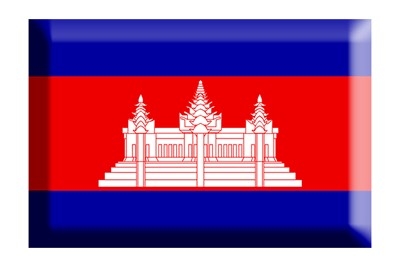
Area:
181,040 km²
Population:
Approximately 15,830,000 (2021 estimate)
Capital city:
Phnom Penh
Political system of government:
Constitutional monarchy (King Norodom Sihamoni)
Main languages:
Khmer
Main religion:
Buddhism
Currency:
Riel
Geography
Cambodia is centrally located among the 10 ASEAN member states. Bordered by the Mekong River, it is home to Tonle Sap, the largest lake in Southeast Asia. It is also called the "Land of Forests" because of its vast forested areas, especially in the northern border region.
History
In the 1970s, Cambodia was embroiled in a civil war that included a genocide of its own people inflicted by the Khmer Rouge regime. A peace agreement was successfully concluded in 1991, and a new government was formed in 1993 following a general election.
Major industries
Thanks to fertile land, agriculture in Cambodia is thriving. Tourism is another key industry, centered around Angkor Wat, Angkor Thom, and other World Heritage sites.
Relations with Japan
There is a long history of contact between the two countries, including the establishment of a Japan Town in the era of shogunate-licensed trading ships. Japan has also been involved in the post-civil war peace process starting in the 1980s, and is currently cooperating in the preservation and restoration of the Angkor Wat site.
Highlights of Cambodia
As told by locally-based Japan Foundation staff

Speaker: Tanaka Haruki, staff member
He has been living in Cambodia for about 4 years and is a father raising two young children, ages 5 and 2.
Life in Cambodia nowadays: You can use an app to hail a tuk-tuk!
Just like its fellow members of ASEAN, Cambodia has developed tremendously in recent years, and life in the capital city of Phnom Penh in particular is no different from being in Japan. The tuk-tuk, a three-wheeled carriage used as a taxi, is Cambodia's best-known means of transport, and with cashless payments having become widespread, you can now book your tuk-tuk through an app. As for retailers, Japan's AEON Group has opened stores and malls in Cambodia, making it convenient for shopping. By the way, Cambodian cuisine is another reason why living in the country is comfortable for Japanese people, as there are many side dishes that go well with white rice and aren't spicy, so it's easy to adapt the food to Japanese tastes.
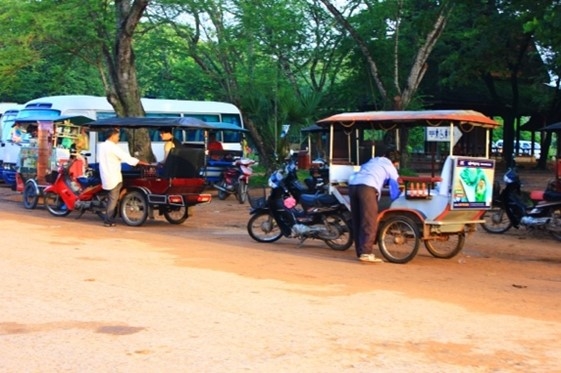
In terms of the economy, some university graduates employed at companies are paid the same level of salary as university graduates in Japan, but the reality is that there is a need for skills, knowledge, and experience in a variety of fields. Conversely, this makes Cambodia a society that has a lot of opportunities, as opposed to countries that have already matured.
A country still scarred by its history of civil war
In the 1970s, Cambodia experienced a civil war, the impacts of which have been expressed in artists' works. Many works still explore the civil war as a theme, such as paintings that depict people suffering during the war. Although the civil war was about 50 years ago, the same trend can be seen even among young artists in their 20s, perhaps because their parents' generation lived through it. It will be some time before Cambodia is free of the shadow cast by the civil war.
The best-known Japanese animation is Crayon Shin-Chan
Many people in Cambodia have the impression that Japan is a country that "treated us very well" by providing official development assistance, including for building infrastructure after the civil war. Japanese people are also well-known for their efforts to help revive various forms of traditional culture that were destroyed by the civil war, such as pottery, textiles, and pepper cultivation.
As for contemporary culture, Japanese animation is popular, and series such as Demon Slayer: Kimetsu no Yaiba and Jujutsu Kaisen are well-known. In other ASEAN countries, Doraemon seems to be the best-known anime, but interestingly enough, in Cambodia Crayon Shin-chan is by far the most famous.
In fact, a Cambodian production company participated as staff members in a Crayon Shin-chan movie that was released in Japan in 2021. However, the movie was not screened in Cambodia and the production staff were not able to watch it. Therefore, in 2022, we showed the movie at the Japan Film Festival organized by the Japan Foundation. We were able to not only make the production staff happy but also the fans who learned that a production company from their country had helped to make Crayon Shin-chan.
More than infrastructure, what Cambodia needs is people who can teach
Many Cambodians were massacred during the civil war, and intellectuals in particular were targeted. As a result, there was no one left to carry on the culture and education, and all of it was lost. Subjects such as arts and crafts and music, which are commonplace in Japanese schools, still do not exist in Cambodia.
What is desperately needed is people who can teach. We often hear of volunteers who go to build schools, but in Cambodia, even if the buildings are there, they are often abandoned because there is no one to teach or no ability to pay the teachers' salaries. Japanese-style school education has been attracting a lot of attention, including having students clean up after themselves and providing education on proper nutrition through school lunches, so I believe that if there are people who can go to Cambodia and provide this type of education, it would definitely be appreciated.
Similarly, when it comes to industry, there is currently nowhere to learn the skills that are in demand. The previously mentioned field of animation production, for example, is finally becoming an industry, but the skills are all self-taught through a series of trial and error. Recently, the Japan Foundation invited Japanese animators and illustrators to hold a workshop, which was very well received.
Cambodians, who dislike conflict, have a strained relationship with their neighbor, Thailand?
Perhaps because of their reverence for Buddhism, Cambodians are gentle and calm as a rule and do not like conflict. You almost never get the sense that someone is trying to cheat you or rip you off, and lost items, whether wallets or smartphones, are usually returned to their owners.
Recently, however, there was an incident in which Cambodia was on the verge of getting into a big fight with neighboring Thailand. At the SEA Games (Southeast Asian Games), an international sporting event, Cambodia, which was hosting for the first time in 2023, used the name "Kun Khmer" for Muay Thai, a fighting sport that Thailand regards as its national sport, claiming that it originated in Cambodia. Thailand was fiercely opposed to this and at one point announced a boycott of the tournament.
Be that as it may, the Cambodian people are generally gentle and kind. Especially when you are living here with kids, you can feel that everyone treats children as treasures. When I go out to eat with my family, they sometimes say, "we will watch your children, so please eat slowly." I myself am raising two children here, and I feel that this is a truly comfortable country to live in for people in this stage of their lives.
Republic of Indonesia

Area:
1,916,862 km²
Population:
Approximately 272,240,000 (2021 estimate)
Capital city:
Jakarta
Political system:
Presidential republic
Main languages:
Indonesian
Main religion:
Islam
Currency:
Rupiah
Geography
Comprised of over 14,000 islands located along the equator, Indonesia has the largest population in ASEAN (4th in the world) as well as the largest land area in ASEAN. While the island of Java, where the capital Jakarta is located, accounts for just 7% of the country's total land area, 60% of the population is concentrated there.
History
Formerly a Dutch colony, the Indonesian archipelago became independent as the Republic of Indonesia. Each ethnic group has its own language, but Indonesian, which was used as a lingua franca for trading, was adopted as the official language upon independence.
Major industries
The manufacturing industry accounts for the largest share. In particular, the country is focusing on the manufacture of motorcycles. The agriculture sector, including palm oil, rubber, and rice, is also thriving.
Relations with Japan
Japan is an important export partner for Indonesia. Conversely, Indonesia is a supplier of coal, liquefied natural gas, and other energy sources vital to Japan. Many Indonesians work in Japan, and the country ranks second in the growth rate of the number of foreign workers.
Highlights of Indonesia
As told by locally-based Japan Foundation staff
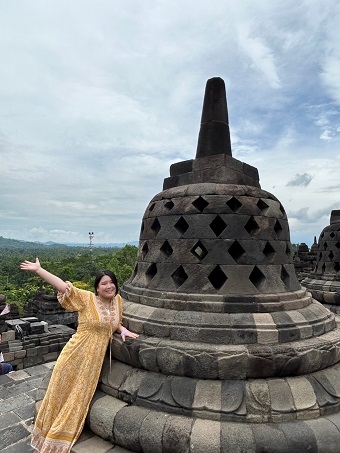
Speaker: Kono Misako, staff member
She has been living in Indonesia for about two and a half years. As a student, she did research on religious education in Indonesia, and visited the country every year.
Young and energetic, Indonesia is a leading member of ASEAN
If I had to sum up my impression of Indonesia today, I would describe it as "young and energetic." In terms of its demographics, there are many young people, and the country is developing rapidly, achieving high economic growth of 5-6% almost every year over the last 20 years or so. I feel like Indonesia is the exact opposite of the mature and calm atmosphere that Japanese society has.
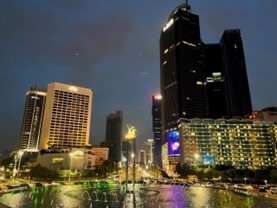
The city where I live has changed rapidly since I got here two and a half years ago, with particularly remarkable changes in the transportation infrastructure. Incidentally, along with the opening of the Jakarta MRT north-south subway line, which also had backing from the Japanese government, many used railroad cars from Japan are now in use on the KRL conventional above-ground railway lines. It is kind of funny to see old railroad cars from Japan's Denentoshi Line, for example, running in Indonesia!
The ASEAN Secretariat is also located in Jakarta, Indonesia's capital, and I feel a sense of pride that Indonesia is the driving force of ASEAN. In 2023, Indonesia also held the ASEAN Chairmanship, and I saw many signs that said "ASEAN" everywhere, even in provincial towns.
If you think Indonesia means Bali, you might be a little off base
For many people in Japan, the first thing that comes to mind when they hear the word "Indonesia" is Bali, but that image may not be so accurate for understanding what Indonesia is like. If you consider religion, for example, the main religion in Bali is Hinduism, but Indonesia as a whole is a country with the largest number of Muslims in the world. Even residents of the capital Jakarta and the second-largest city Surabaya often have the impression that Bali is like another country.
In addition to these differences between Jakarta and Bali, Indonesia as a whole is a very diverse country. East to west, the archipelago is as wide across as the United States of America, and is divided into three time zones. Even if only classifying them broadly, over 300 different ethnic groups call Indonesia home, each with their own unique culture. Each of them speaks Indonesian, the official language of the country, while placing value on their own language.
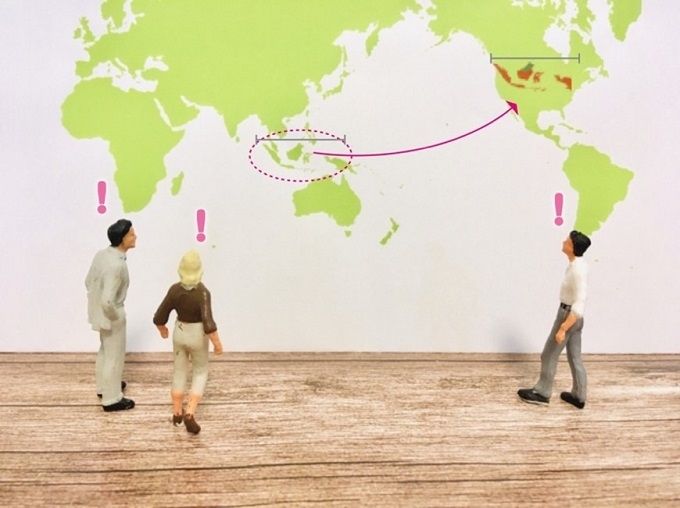
The Indonesian language was originally a variety of Malay used for trade, and has been adapted to make it easier for more people to learn. Because of its diversity, Indonesia is a country that values mutual respect and aims for unity as a nation.
The presence of religion is increasing as literacy and higher education rates rise
Although Indonesia is very diverse, when it comes to religion, currently nearly 90% of the population is Muslim. In particular, there has been a conspicuous religious revival of late, with an increase in the number of more observant Muslims, a higher percentage of women wearing the hijab, and even politicians running for election emphasizing how devout they are to the teachings of Islam.
This trend has increased in proportion to the increase in literacy rates and higher education rates. I am not sure exactly why, but one factor may be that more and more people are trying to read the Qur'an (the holy book of Islam) themselves.
In Indonesia, religion still plays a major role in society. Local people's ID cards always include the religion they believe in, and Japanese people who visit Indonesia are frequently asked what their religion is. Not many people in Japan are highly conscious of their religious beliefs on a day-to-day basis, so don't be surprised if you are asked in Indonesia.
Familiarity with the Japanese language and Japanese culture is strong, and the number of people who want to work in Japan is growing year by year
It turns out that in Indonesia, Japanese is one of the options you can choose as your second foreign language for secondary education. This is one of the reasons why Indonesia has the second largest number of Japanese language learners in the world.
Like many other ASEAN countries, Japanese pop culture is pervasive in Indonesia. The drama series Oshin is one of the most popular, having been replayed many times on TV, and is well known among young people around age 30. In addition to the animation series Doraemon, Crayon Shin-chan, Naruto, and One Piece, there are also high school students who visit the Japan Foundation after learning about Japan through Jujutsu Kaisen and Spy x Family. And while the popularity of K-pop and Korean television dramas has been increasing in recent years, Japanese media is still popular too. As for Japanese food, there are many Japanese chain restaurants, as well as locally-owned sushi and takoyaki (grilled octopus) restaurants, which are also very popular, though the center of takoyaki is sometimes made with sausages!
In addition, the number of people who want to work in Japan is still growing every year. Even though the Japanese economy is stagnating, in Indonesia, Japan still has the image of a country with an advanced economy and technology. As it's also safe and has many tourist attractions, many Indonesians register with organizations that will send them to Japan for technical intern trainees and study hard every day to prepare for working in Japan.
A country where people are full of energy and diverse cultures coexist
As I mentioned earlier, my impression of people in Indonesia is that they are young! There are about 50 Indonesian staff members at the Japan Foundation office, and at the New Year's party, they were full of energy, suddenly starting to dance and run around. Another characteristic of Indonesia is a sense of closeness to other people. When I was in a cab and listening to the driver talking and talking to me with no end in sight, I thought to myself, "this is Indonesia."
Among the ASEAN countries, I feel that Indonesia is most conscious of Thailand and Malaysia, which are also developing rapidly. In particular, Malaysia is geographically close, and there is a debate over which country batik (traditional wax-dyed cloth) originates from.
What I personally would like people to know about Indonesia is how diverse it is. Particularly when it comes to religion, various practices that have been introduced in different periods of time, starting with animism and continuing through Hinduism, Buddhism, and Islam, are still practiced. In Indonesia, you can experience diverse religious architecture, including the largest mosque in Southeast Asia, the Istiqlal Mosque (Islam), as well as Borobudur (a Buddhist temple), and Prambanan (a Hindu temple). I would like to encourage people from Japan to visit these places.
Lao People's Democratic Republic
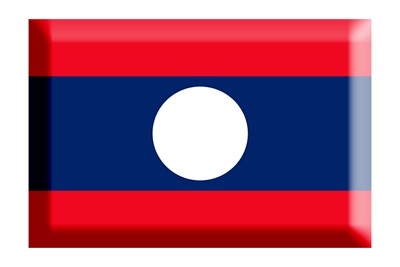
Area:
236,800 km²
Population:
Approximately 7,370,000 (2021 estimate)
Capital city:
Vientiane
Political system:
Socialist republic
Main languages:
Lao
Main religion:
Buddhism
Currency:
Lao kip
Geography
Laos is the only landlocked country in ASEAN, bordered by five countries: Vietnam, Cambodia, Thailand, Myanmar, and China. The Mekong River flows from north to south, and the country is rich in water resources and nature. Fifty percent of the population is Lao, but approximately 50 other ethnic groups also live there.
History
In the 14th century, the country was unified under the Kingdom of Lan Xang. Later, Laos was incorporated into French Indochina, and became fully independent in 1953. After a period of civil war, the Lao People's Democratic Republic was established in 1975. Although economic development was slow due to a planned economy, the country has been promoting the introduction of a market economy and an open economy policy since 1986.
Major industries
Agriculture is the main industry, with coffee in particular an important export product. The country is also focusing on the tourism industry.
Relations with Japan
As part of its official development assistance (ODA) program, Japan is providing grant aid for the protection and preservation of the Wat Phu ruins, which are registered as a World Heritage site, and for infrastructure development such as bridges and roads.
Highlights of Laos
As told by locally-based Japan Foundation staff
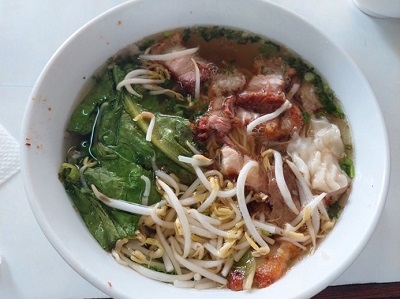
Laos has an abundance of noodle dishes (Photo: Kusakabe)
Speaker: Kusakabe Yosuke, Director
After having been in charge of Russia for a long time, in June 2022 he took charge of Laos. He is now completely hooked on the unique charm of this country.
Laos today: A country where you can still find the "nice countryside" that is now a rarity in the rest of the world
I live in Vientiane, the capital city, where there are several large shopping malls, so I never feel inconvenienced in my daily life. There are also some surprisingly sophisticated cafes and restaurants, and the food is delicious. You will see luxury cars on the road, and I think the percentage of electric cars is rather higher than in Japan.
However, if I had to sum up Laos, I would say "nice countryside." I think that is exactly what foreigners are looking for when they visit Laos, as the good countryside is disappearing around the world today. Even in Vientiane, if you venture down an alleyway, you will find little shops with tin roofs selling candy in glass containers, and a retro atmosphere reminiscent of the Showa era in Japan remains.
I feel like this country has a lot of strong women. In many cases, women are the ones who run the stores, while men are gambling on the side of the road, and tuk-tuk drivers park their cars in the shade and sleep in hammocks hung from the carriages. Incidentally, most tuk-tuks in Laos are like a motorcycle pulling a crude carriage that seats about six people.
There are still remnants of the culture of France, which ruled Laos during its colonial period, and baguettes and croissants are commonly sold in local stores. Although it is said that Vietnam has a strong political influence and Thailand has a strong economic influence, ties with China seem to be deepening with the opening of a high-speed railroad connecting Vientiane and Kunming, China, in 2021.
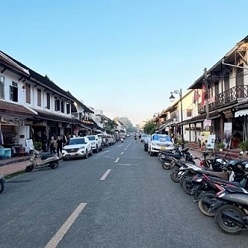
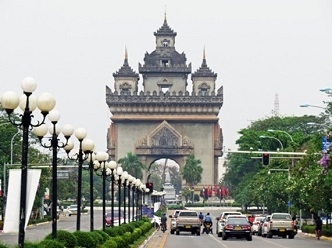
Keywords
Back Issues
- 2024.10.25 My Life in Japan, Li…
- 2024.5.24 The 50th Japan Found…
- 2024.5.24 The 50th Japan Found…
- 2024.5. 2 People-to-People Exc…
- 2024.5. 2 People-to-People Exc…
- 2023.12. 7 Movie Theaters aroun…
- 2023.6.16 The 49th Japan Found…
- 2023.4.24 The 49th Japan Found…
- 2022.12.27 Living Together with…
- 2022.12.27 Living Together with…


